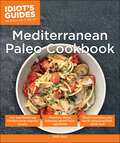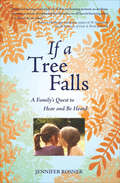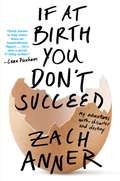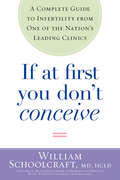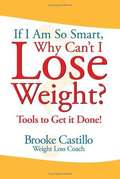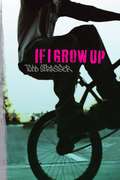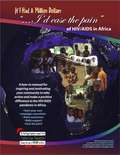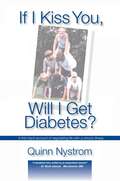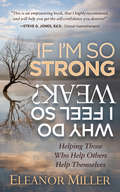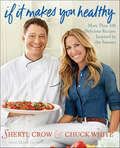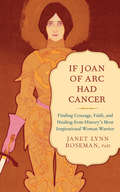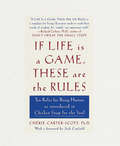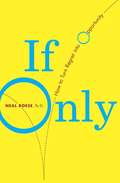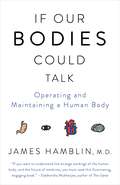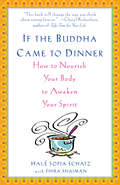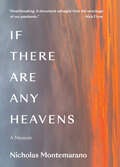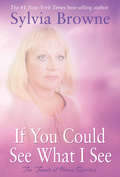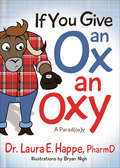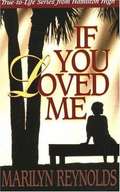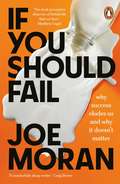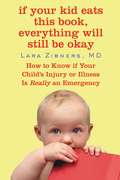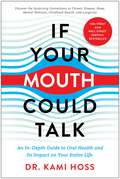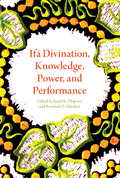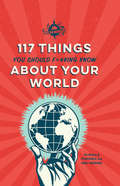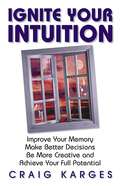- Table View
- List View
Idiot's Guides: Mediterranean Paleo Cookbook (Idiot's Guides)
by Molly PearlThe Paleo Diet is an incredibly popular diet, but it's also expensive, difficult to follow, and controversial due to the high consumption of red meat, pork, and animal fats that the diet demands. Idiot's Guides: Mediterranean Paleo Cookbook combines the benefits of the Paleo Diet with the medically-proven health benefits of the Mediterranean Diet to give Paleo followers a new way to reap the benefits of two of the most popular diets on the planet. Anyone who is interested in taking a healthier approach to Paleo (traditional Paleo followers, vegan, or vegetarian-leaning eaters who need or want to eat meat for health reasons, and anyone with grain or inflammation issues) will be interested in this book. With over 100 fantastic, uber-healthy recipes, you will learn how to cook the Mediterranean Paleo way from an experienced Paleo chef who has developed recipes for several of the most popular Paleo sites on the Internet.
If a Tree Falls: A Family's Quest to Hear and Be Heard
by Jennifer RosnerA revealing memoir of a family and a &“wrenching journey into deafness from the standpoint of a mother, a wife, a daughter, a philosopher, and a Jew&” (Ilan Stavans, author of On Borrowed Words: A Memoir of Language). When her daughters were born deaf, Jennifer Rosner was stunned. Then she discovered a hidden history of deafness in her family, going back generations to the Jewish enclaves of Eastern Europe. Traveling back in time in her mind, she imagined her silent relatives, who showed surprising creativity in dealing with a world that preferred to ignore them. Here, in a &“gentle meditation on sound and silence, love and family&” Rosner shares her journey into the modern world of deafness, and the controversial decisions she and her husband made about hearing aids, cochlear implants and sign language (Publishers Weekly). Punctuated by memories of being unheard, Rosner&’s imaginative odyssey of dealing with her daughters&’ deafness is at its heart a story of whether she—a mother with perfect hearing—can ever truly hear her children.
If At Birth You Don't Succeed: My Adventures With Disaster And Destiny
by Zach AnnerComedian Zach Anner opens his frank and devilishly funny book, If at Birth You Don't Succeed, with an admission: he botched his own birth. Two months early, underweight and under-prepared for life, he entered the world with cerebral palsy and an uncertain future. So how did this hairless mole-rat of a boy blossom into a viral internet sensation who's hosted two travel shows, impressed Oprah, driven the Mars Rover, and inspired a John Mayer song? (It wasn't "Your Body is a Wonderland.") <p><p> Zach lives by the mantra: when life gives you wheelchair, make lemonade. Whether recounting a valiant childhood attempt to woo Cindy Crawford, encounters with zealous faith healers, or the time he crapped his pants mere feet from Dr. Phil, Zach shares his fumbles with unflinching honesty and characteristic charm. By his thirtieth birthday, Zach had grown into an adult with a career in entertainment, millions of fans, a loving family, and friends who would literally carry him up mountains. <p> If at Birth You Don't Succeed is a hilariously irreverent and heartfelt memoir about finding your passion and your path even when it's paved with epic misadventure. This is the unlikely but not unlucky story of a man who couldn't safely open a bag of Skittles, but still became a fitness guru with fans around the world. You'll laugh, you'll cry, you'll fall in love with the Olive Garden all over again, and learn why cerebral palsy is, definitively, "the sexiest of the palsies."
If at First You Don't Conceive: A Complete Guide to Infertility from One of the Nation's Leading Clinics
by William SchoolcraftMore than 7.3 million women in the United States are unable to have children because of infertility challenges, according to the American Society for Reproductive Medicine. Women and men diagnosed with infertility often feel overwhelmed and panicked; they are eager for accessible information and medically sound guidance. In this breakthrough book, Dr. Schoolcraft, one of the most renowned fertility specialists, offers hope to prospective parents by explaining what they need to know, including: • choosing the right physician and clinic• finding proven treatments for each condition• dealing with the emotional challenges of infertility• understanding the financial aspects of treatmentIf at First You Don't Conceive offers the latest information in the key areas of fertility drugs, insemination, in vitro fertilization, male infertility treatments, fertility options for cancer patients, and much more. It saves millions of hopeful parents from suffering and confusion by allowing them to become their own best advocates in the fight for fertility.
If I Am So Smart, Why Can't I Lose Weight? Tools to Get It Done
by Brooke CastilloFrom the book: If you want to win at weight loss, you need a great coach! In warm, inspiring prose, weight loss mentor Brooke Castillo will empower you, teaching you the skills you need to get the body you want, and giving you the tools you need for continuing on your own. Based on the same unique process she uses with her private clients, Brooke Castillo teaches you to find, challenge, and change the emotional issues that keep you from achieving your ideal weight. You'll learn why you shouldn't exercise for results and how to pinpoint what's keeping you from losing weight. And you'll discover the best and most effective ways to really feel your feelings, which can help you start to notice other things beside your weight-like desires, dreams and goals. Humorous and insightful, If I Am So Smart, Why Can't I Lose Weight? Tools to Get it Done gives you the map you need to get your life-and your weight-going in the right direction.
If I Grow Up
by Todd Strasser"WHEN YOU GREW UP IN THE PROJECTS, THERE WERE NO CHOICES. NO GOOD ONES, AT LEAST." In the Frederick Douglass Project where DeShawn lives, daily life is ruled by drugs and gang violence. Many teenagers drop out of school and join gangs, and every kid knows someone who died. Gunshots ring out on a regular basis. DeShawn is smart enough to know he should stay in school and keep away from the gangs. But while his friends have drug money to buy fancy sneakers and big-screen TVs, DeShawn's family can barely afford food for the month. How can he stick to his principles when his family is hungry? In this gritty novel about growing up in the inner city, award-winning author Todd Strasser opens a window into the life of a teenager struggling with right and wrong under the ever-present shadow of gangs.
If I Had a Million Dollars...I'd Ease the Pain of HIV/AIDS in Africa: A how-to manual for individuals and groups wishing to make a positive response to the HIV/AIDS pandemic in Africa
by Stephen DouglasIn Africa, every minute of every day, five people die of AIDS and nine more are newly infected. In 2003, a group of like-minded, energetic people got together to actively motivate and inspire their community to help ease the pain of HIV/AIDS in Africa. This manual was produced by the residents of York Region, Ontario, who have come together to raise awareness and money. They chose the Stephen Lewis Foundation as the beneficiary of their efforts. Follow their story and watch how a spark can become an inferno. Their success can be your success. This guide was written by Stephen Douglas on behalf of the York Region Committee in support of the Stephen Lewis Foundation. Visit their web site at www.york4stephenlewis.ca for more information. "The AIDS pandemic is the biggest, most monumental tragedy of our time. Even more tragic is the fact that it can be stopped, but hasn’t been. In Africa, communities have been shattered by HIV/AIDS. Here in Canada, our strong and caring communities have the power to ease the pain and suffering. Let’s unite our communities to help theirs." - Steven Page of the Barenaked Ladies
If I Kiss You, Will I Get Diabetes?
by Quinn NystromQuinn's new book, "If I Kiss You, Will I Get Diabetes?" is now available! It's her personal story of living with type 1 diabetes. Nystrom's journey chronicles her real life experiences of figuring out how to live a "normal" life with a chronic disease. Quinn's wish with this book is, "I'm hoping this book will provide courage and faith for your journey as it has my own."
If I'm So Strong, Why Do I Feel So Weak?: Helping Those Who Help Others Help Themselves
by Eleanor MillerIf I’m So Strong, Why Do I Feel So Weak teaches rescue workers and others who have chosen self-sacrificing work how to help themselves while still helping others. There are so many who choose a self-sacrificing field of work, such as those who work in Emergency Medical Services, who feel self-doubt when it comes to taking care of themselves. They spend so much time saving the rest of the world that it no longer feels good for them. Eleanor Miller lived that life. And after years of searching, she understands why the popular remedies just don’t cut it. She offers guidance to readers on how to say no without feeling guilty, how to find their own voice, strength, and confidence and so much more on their path to recognizing their own importance.
If It Makes You Healthy: More Than 100 Delicious Recipes Inspired by the Seasons
by Mary Goodbody Sheryl Crow Chuck WhiteKnown as much for her youthful looks and natural chic as she is for her sunny and heartfelt songs, Sheryl has written a cookbook that is true to her styleRock star. Activist. Mother of two. How does Sheryl Crow have time to keep so healthy and fit? Sheryl knows how to eat right and deliciously thanks to personal chef Chuck White, affectionately known as "Chef Chuck." The duo met while Sheryl was battling breast cancer, which for her, was a wake-up call to eat better. Since then, Chuck has taught Sheryl how to do just that by cooking foods that are seasonal, locally grown, and vitamin-rich to keep her on top of her game and always ready to perform. This wholesome approach to every dish has been successfully integrated into all aspects of Sheryl's busy life—from dinner parties, to touring, to settling in at home near Nashville, TN with her two sons, Wyatt and Levi. Now Sheryl and Chuck want to bring their nutritious, delicious creations from her kitchen into yours. Rock-and-roll flavored throughout, If It Makes You Healthy will have a full menu of approximately 125 recipes grouped seasonally, which reflects Sheryl's busy schedule: Summer months offer tomatoes and corn, and summer also puts Sheryl on the road. Fall and winter brings apples and winter squash, when Sheryl is at home and in the studio. From the big entertaining menus that are prepared for her crew while touring (Mojito braised pork) to small home-cooked meals for Sheryl and her children (basil and apple marinated chicken)—all lushly photographed by Victoria Pearson—this book will be filled with easy and flavorful recipes anyone can make. Along the way, Sheryl opens up about touring and home life with stories about her childhood, her early years as a backup singer, and her eventual stardom.
If Joan of Arc Had Cancer
by Janet Lynn RosemanReclaim Inner Strength, Courage, and Faith Joan of Arc, the fourteenth-century teenager who led the armies of France before facing the Inquisition, stands as the quintessential icon of feminine courage and faith. These are the attributes most needed by women facing a diagnosis of cancer or any life-threatening disease. Drawing directly from the words Joan spoke at her trial, author Janet Lynn Roseman presents thirty-one Flames of Courage and thirty-one Gateways to be used over the course of a month or a year to resurrect inner fortitude and create an environment for healing. Her approach encompasses body, mind, and spirit and will help you access and reclaim your personal power to find healing and peace in your journey.
If Life Is a Game, These Are the Rules: Ten Rules for Being Human as Introduced in Chicken Soup for the Soul
by Cherie Carter-ScottThe Ten Rules For Being Human: 1. You will receive a body. 2. You will be presented with lessons. 3. There are no mistakes, only lessons. 4. Lessons are repeated until learned. 5. Learning does not end. 6. "There" is no better than "here." 7. Others are only mirrors of you. 8. What you make of your life is up to you. 9. All the answers lie inside of you. 10. You will forget all of this at birth. If life is a game, what are the rules? We all know the feeling: In the game of life, why am I the only one who doesn't know how to play? But now, help is at hand, because this wonderful little book will teach you the rules so that you can conquer life's challenges and manage its unpredictable ups and downs. For one of her workshops several years ago, Chérie Carter-Scott, a corporate trainer and consultant, composed a list of basic truths about life, which she named "The Ten Rules for Being Human." Right away, the Rules resonated with her clients, who photocopied and passed the list to friends and relatives. Within months, Chérie's Rules were in thousands of homes all over the country, and eventually, they were published in Chicken Soup for the Soul and have also appeared in Ann Landers' column. Although there's no formula to help you win the game of life, Chérie's Rules convey a universal wisdom that, once understood and embraced, can contribute to meaningful relationships with ourselves and others, at work and in the home. In If Life Is a Game, These Are the Rules, Chérie shares that there are no mistakes in life, only lessons that are repeated. In thoughtful, inspirational essays illustrated with encouraging personal anecdotes, she includes the lessons that can be learned from each of the Rules and offers insights on self-esteem, respect, acceptance, forgiveness, ethics, compassion, humility, gratitude, and courage. Best of all, Chérie shows that wisdom lies inside each one of us and that by putting the Ten Rules for Being Human into action we can create a more fulfilling life. Chicken Soup for the Soul, they instantly became a favorite section of that wildly successful book. Now Carter-Scott, an internationally acclaimed motivational speaker, brings the rules to life by applying them to anecdotes drawn from her own encounters, as well as stories from her family, close friends, and workshop participants. Presented in a personal format, these steps to becoming a satisfied and well-adjusted person are sure to garner an even wider following. -->From the Hardcover edition.
If Only: How to Turn Regret into Opportunity
by Neal J. RoeseIf you spend a lot of time thinking about "what might have been," you're not alone. In If Only, Neal Roese, Ph.D., one of the world's top scientists studying regret, shows us that thoughts about what might have been are practically unavoidable. In fact, they are produced spontaneously by the brain with a very practical goal--to guide us toward improvement. But the same thoughts can bring the pain of regret. Is it worth the pain to get the improvement? Or should you live life with no regrets? Luckily, it's not a package deal. The surprising message of If Only is that we can manage our regret style to maximize the gain and minimize the pain. In an entertaining and upbeat book that weds lively science writing to practical self-help, Dr. Roese mines the research and shares simple strategies for managing your life to make the most of regret. You'll learn: *Don't Over-react.You may react to a regrettable situation by taking many fewer chances. Don't. This only ensures that you will miss out on new opportunities. *Think Downward. Consider the downward alternatives. How could a bad situation have gone even worse? This makes you feel appreciative of what you have. *Do It. If you decide to do something and it turns out badly, research shows that it probably won't haunt you down the road. (You'll reframe the failure and move on.) But you will regret the things left undone. *Regrets are Opportunities Knocking. Our brains produce the most "if only" thoughts about things in our lives that we can still change. So consider regret as a signal flashing: It's not too late! If Only also shows that "if only" thinking plays a huge role across our lives, from how best to buy, to why we enjoy movies, how juries decide, and the way we choose someone to love. If Only opens a new window into the way our minds work and offers clear lessons for living more happily with the past. "Fifteen years of research have been combined into a list of the top four biggest regrets of the average American: * not getting more education * career regrets * regrets in love * not spending enough time with kids The list is essentially a summary of the biggest traps, pitfalls, and mistakes into which people like you might blunder. Look over the list and try to identify areas of your life that represent the greatest vulnerability to future regret. And act now to avoid regret later." --from If Only.
If Our Bodies Could Talk: A Guide to Operating and Maintaining a Human Body
by James Hamblin"If you want to understand the strange workings of the human body, and the future of medicine, you must read this illuminating, engaging book." —Siddhartha Mukherjee, author of The Gene In 2014, James Hamblin launched a series of videos for The Atlantic called "If Our Bodies Could Talk." With it, the doctor-turned-journalist established himself as a seriously entertaining authority in the field of health. Now, in illuminating and genuinely funny prose, Hamblin explores the human stories behind health questions that never seem to go away—and which tend to be mischaracterized and oversimplified by marketing and news media. He covers topics such as sleep, aging, diet, and much more: • Can I “boost” my immune system? • Does caffeine make me live longer? • Do we still not know if cell phones cause cancer? • How much sleep do I actually need? • Is there any harm in taking a multivitamin? • Is life long enough? In considering these questions, Hamblin draws from his own medical training as well from hundreds of interviews with distinguished scientists and medical practitioners. He translates the (traditionally boring) textbook of human anatomy and physiology into accessible, engaging, socially contextualized, up-to-the-moment answers. They offer clarity, examine the limits of our certainty, and ultimately help readers worry less about things that don’t really matter. If Our Bodies Could Talk is a comprehensive, illustrated guide that entertains and educates in equal doses.From the Hardcover edition.
If the Buddha Came to Dinner: How to Nourish Your Body to Awaken Your Spirit
by Hale Sofia SchatzIf the Buddha came to dinner at your home, what would you serve? Fast food? A frozen meal quickly reheated in the microwave? Chances are you'd feed your honored guest a delicious meal prepared with love and care. But the next time you have dinner, what will you eat?With so much processed food in the marketplace, obesity in adults and children dramatically on the rise, and digestive problems increasingly more common, it's clear that we're facing a serious food crisis in this country. The answer, however, isn't just to go on a diet. Reducing the intake of refined and processed foods and increasing whole foods certainly can improve one's health. But we need more. We need to feed ourselves with a sense of purpose, self-respect, love, and passion for our lives. We need to nourish our spirits.Nourishment isn't a fad diet . . . it's a lifelong journey, and Halé Sofia Schatz is the ideal guide. Gentle, wise, and humorous, she shows us the way to the heart of nourishment--our own inner wisdom that knows exactly how to feed our whole self. A perfect blend of inspiration and practical suggestions, If the Buddha Came to Dinner includes guidelines for selecting vital foods, ideas for keeping your energy balanced throughout the day, a cleanse program, and over 60 recipes to awaken your palate.Open this book and nurture yourself as never before. You'll be fed in a whole new way.
If There Are Any Heavens: A Memoir
by Nicholas MontemaranoWritten with visceral urgency in the earliest days of grief, If There Are Any Heavens resists categorization: it is a memoir, a poem, a mournful but loving song. On January 6, 2021, at the peak of the COVID-19 pandemic in America, while the U.S. Capitol is under attack, Nicholas Montemarano drives six hundred miles to see his mother, who is hospitalized with COVID pneumonia and in a critical state. For ten days he lives in a hotel minutes from the hospital, alternating between hope and helplessness. This is the story of those ten days. It is the story of the pandemic told through the intimate prism of one family’s loss. Written with visceral urgency in the earliest days of grief, If There Are Any Heavens resists categorization: it is a memoir, a poem, a mournful but loving song. Its form asks readers to slow down and breathe between each broken line. At other moments, a chorus of voices—anti-maskers, COVID-deniers, and doctors—causes the reader to become breathless. It is an almost real-time account of the anxiety, uncertainty, and sorrow brought on by this pandemic. It is also, finally, a devastating homage to a family’s love in a time of great loss. Now, and many years from now, when people want to understand the personal cost of the COVID-19 pandemic, they will turn to this intimate and spare elegy from a son to his mother.
If You Could See What I See: The Tenets Of Novus Spiritus
by Sylvia BrowneThis enlightening work by renowned psychic Sylvia Browne contains the Gnostic tenets of her church, the Society of Novus Spiritus, and is a map of our charts regardless of what spiritual path we follow. It has taken many years of research to put together what at first seems simple tenets to follow, but in going deeper, this book carries within it the very heart of humankind’s search for our own spirituality. Sylvia has also included many details from her own personal journey, which she feels is comparable to the quest that each of us follows to find our own God-center. As we travel this road, we can realize that long-forgotten, yet simple and truthful goal of viewing our life on Earth as our path to God.
If You Give an Ox an Oxy: A Parod(ox)y
by Laura E. HappeRemember the mouse who wanted a cookie—and a glass of milk to go with it? Or the moose who wanted a muffin? In If You Give an Ox an Oxy, adolescents meet an ox who takes a prescription medication called an opioid. They follow him as he goes from taking a few opioids, to overusing them, and finally becoming addicted, learning about treatment for addiction and how dangerous taking illegal opioid drugs can be. Inspired by the mouse who was clearly addicted to cookies, Ox’s story demonstrates how opioid use often leads to a cycle of addiction and recovery. Too often this cycle is hard to break. Although Ox’s story is told in a childlike way, opioid use is a very serious and complex topic. Written by national expert on the opioid epidemic Dr. Laura E. Happe, If You Give an Ox an Oxy focuses on preventing opioid misuse for the next generation. Dr. Happe transforms the beloved childhood picture book into an educational resource that teens are sure to remember to help them understand the risks of opioid use—and why it’s best not to start in the first place.
If You Loved Me (True-to-Life Series from Hamilton High)
by Marilyn ReynoldsAt 15, Lauren Riley promised herself that she would not mess up her life and would stay away from drugs and sex. But two years later, her boyfriend Brandon is pressuring her to forget that promise. Both her parents are lost to her through long-time drug addiction, but through her writing, Lauren tries to deal with her problems and discovers a deeper strength. Based on the reality of everyday high school life, and critiqued by high school students as it was written, this book accurately portrays and confronts the issues of drugs, race, sex, first love, and finding self-expression.
If You Should Fail: A Book of Solace
by Joe Moran'There is an honesty and a clarity in Joe Moran's book If You Should Fail that normalises and softens the usual blows of life that enables us to accept and live with them rather than be diminished/wounded by them' Julia Samuel, author of Grief Works and This Too Shall Pass 'Full of wise insight and honesty. Moran manages to be funny, erudite and kindly: a rare - and compelling - combination. This is the essential antidote to a culture obsessed with success. Read it' Madeleine BuntingFailure is the small print in life's terms and conditions.Covering everything from examination dreams to fourth-placed Olympians, If You Should Fail is about how modern life, in a world of self-advertised success, makes us feel like failures, frauds and imposters. Widely acclaimed observer of daily life Joe Moran is here not to tell you that everything will be all right in the end, but to reassure you that failure is an occupational hazard of being human. As Moran shows, even the supremely gifted Leonardo da Vinci could be seen as a failure. Most artists, writers, sports stars and business people face failure. We all will, and can learn how to live with it. To echo Virginia Woolf, beauty "is only got by the failure to get it . . . by facing what must be humiliation - the things one can't do."Combining philosophy, psychology, history and literature, Moran's ultimately upbeat reflections on being human, and his critique of how we live now, offers comfort, hope - and solace. For we need to see that not every failure can be made into a success - and that's OK.
If Your Kid Eats this Book, Everything will Still be Okay: How to Know if Your Child's Injury or Illness Is Really an Emergency
by Lara ZibnersAs an Emergency Room pediatrician, Dr. Lara Zibners has seen it all. She's cared for a portion of the 25 million children in the U.S. who are taken to the ER each year-and she knows that more than 50% of these visits may be unnecessary. IF YOUR KID EATS THIS BOOK, EVERYTHING WILL STILL BE OKAY shows parents when they may need to take action, and when they might be able to just go back to bed and call their doctor in the morning. With sections such as "In the Diaper" and "His Noggin and the Nervous System," Dr. Zibners covers every part of the body and offers sound advice (for example, did you know that oil is the best remedy for dissolving superglue between body parts?), all while maintaining a lively and often hilarious tone. To the question, "What if she chokes on her vomit?" Zibners answers, "A healthy child will not choke on her own vomit, unless she is drunk or high on Grandma's sleeping pills." Finally, no more frantic late-night searches through the "why to buy,""how to diaper," or "what to feed him" sections found in other childcare books to find out if little Franny needs to go to the ER. This book focuses on the truly important questions, like how to keep her from electrocuting herself in the first place. Not every child has a pediatrician with specialized emergency room experience living in her home. But this book just might be the next best thing. Lara Zibners, MD, is a former Assistant Professor of Pediatric Emergency Medicine at Mount Sinai Hospital in New York City . Currently, she divides her professional time between New York and London .
If Your Mouth Could Talk: An In-Depth Guide to Oral Health and Its Impact on Your Entire Life
by Kami HossUSA TODAY AND WALL STREET JOURNAL BESTSELLER You&’ve heard the advice: If you want to live longer, eat healthy foods and exercise daily. But there&’s a third piece of the puzzle, and it can add 10 to 15 years to your life. It&’s been right under your nose this whole time—literally. Your mouth is the gateway to your body and is the most critical organ for improving your health, from childhood onward. Everything in the human life cycle is related to the mouth: fertility, childbirth, sleeping soundly, success in school, finding a mate, getting a job, psychological well-being, avoiding chronic or systemic disease, and aging well. Your mouth is a window into the health of your body as a whole; from its microbiome to its structure, it impacts your physical and mental wellness in countless ways. Unfortunately, the mouth-body connection has been largely neglected by American medicine . . . until now. If Your Mouth Could Talk is the result of over 20 years of firsthand experience and research by renowned orthodontist and dentofacial orthopedist, Dr. Kami Hoss. In this groundbreaking work, Dr. Hoss connects the dots between oral health and whole-body health, offering a roadmap to a longer, more successful future for you and your family. This isn&’t a book about brushing and flossing—or any of the other standard advice you get from your dentist. Instead, you&’ll hear about how to protect your mouth&’s microbiome, the effect of diet, the relationship between oral structure and sleep problems, how to breathe better, and more. This is an in-depth guide for people who want to take control of their health to the fullest extent possible—who want to understand how their mouth contributes to their overall health and quality of life, and what they can do to better care for it. If your mouth could talk, it would tell you about the condition of your entire life. Time to start listening.
Ifá Divination, Knowledge, Power, and Performance
by Rowland O. Abiodun Jacob K. OluponaThis landmark volume compiled by Jacob K. Olupona and Rowland O. Abiodun brings readers into the diverse world of Ifá--its discourse, ways of thinking, and artistic expression as manifested throughout the Afro-Atlantic. Firmly rooting Ifá within African religious traditions, the essays consider Ifá and Ifá divination from the perspectives of philosophy, performance studies, and cultural studies. They also examine the sacred context, verbal art, and the interpretation of Ifá texts and philosophy. With essays from the most respected scholars in the field, the book makes a substantial contribution toward understanding Ifá and its role in contemporary Yoruba and diaspora cultures.
IFLScience 117 Things You Should F*#king Know About Your World
by Paul Parsons The Writers of IFLScienceIFLScience presents the most intriguing and far-out facts about space, technology, the human brain, nature, and so much more that you should know, right now!117 Things You Should F*#ing Know About Your World is a compendium of the greatest articles from IFLScience's long history, broken up by leading subjects: Health & Medicine Plants & Animals Technology The Brain Space The Environment Chemistry PhysicsEach chapter opens with a new and irreverent introduction to the subject and collection of stories by author Paul Parsons, and the book features fascinating sidebars on related stories, photos, and illustrations throughout.From pinpointing the exact worst time to be alive in human history, to learning what makes you a procrastinator or a go-getter, to the very key to a happy sex life, and so much more, this is the science book that only the world's leading source of crazy-but-true stories could produce.
Ignite Your Intuition: Improve Your Memory, Make Better Decisions, Be More Creative and Achieve Your Full Potential
by Craig KargesExtraordinist Craig Karges is known to millions of television viewers for his remarkable demonstrations of extraordinary phenomena on The Tonight Show with Jay Leno, Larry King Live, and many other TV shows. He presented his one-man touring show "Experience the Extraordinary" at performing arts centers, universities and corporate events in over 150 cities worldwide in 1998. Readers will learn how to use their intuition to solve problems, make decisions, come up with creative ideas, forecast their future, and even learn how to be in the right place at the right time. Karges reveals to readers proven techniques to program the subconscious mind for success including visualization, affirmations, and goal setting. They will learn how to use their subconscious to achieve personal goals and become the individuals they truly want to be. Karges also delves deeper into the power of the subconscious disclosing how to use dreams to solve problems and gain powerful insights about life. He reveals how it may be possible to know the unknown — how to exploit your natural psychic abilities. Readers will learn how to recognize these powers, develop them, and use them in daily life. Karges includes exercises, games, and stunts that help readers test and enhance subconscious skills, while amazing their friends at the same time.
